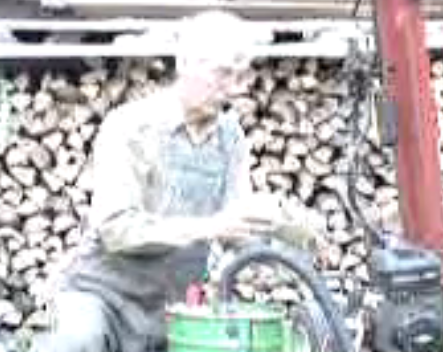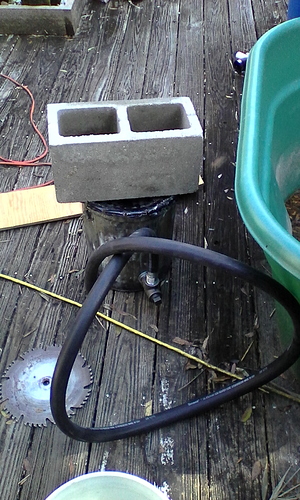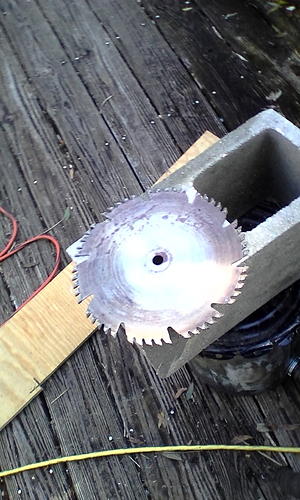hi Mart , If I were you I would just look at buying some tig nozzles , something like these ones that I use are cheap and if you break one its no biggie , just find a way place them into or over the pipe nipple and allow for expansion .
Dave
http://www.ebay.com.au/itm/Tig-Torch-Nozzle-Cup-10-WP9-WP20-13N13-5Pack-/191503331948?hash=item2c967cf26c
Thanks I just ordered those they are the right price.
Ok, I have seen Christmas pop corn canistors and tin cans used for the filter for the charcoal gasifier. What canister do you recommend that is air tight and easy to service? So far I like the popcorn canister the best.


I believe empty (steel) paint cans are another popular choice. I thought that was what @glgilmore used, but maybe it was a popcorn tin.
I like PVC thin wall 6" pipe with caps. Just slide the caps on, no screws or anything.
Opps, should have said 4" pipe…
I have used 6"stove pipe with inverted paint can lids. When the thin lids faild I used riding lawn mower wheels with the stove pipe. I taped all the joints other than welded pipe fittings with masking tape.
I use a 20 litre drum with a lid held down with springs , I think the larger the better I do have a small cyclone before it to capture as much as possible before the drum though .
I have also seen plastic drums used , and I guess that would also work as long as you have a good length of pipe or gas cooler inline away from gasifier .
Have used the 6 inch drain pipe with push on end caps and taped them up just in case and filled with foam , it worked ok until one run i decided to just leave gasifier to run out , gas got hot and softened the pvc end cap .
Dave
So I installed the bottom outlet and I did some testing for leaks. I found the top leaked pretty bad with the present seal. I grabbed a rubber seal from another 5 gal bucket lid and with the cement block on top I found it still leaked but this was the lowest amount of air loss. I am considering putting a bead of the red gasket sealant in the top of the lid and smoothing it out with my finger and see if that does better. I made a filter, and as I look at this I am considering putting on a 6 foot run of metal pipe to cool the air before it hits the filter… I am not sure if adding the exhaust of the motor will keep the fire cool enough, time will tell.
Hi Mart, what I do for seals is that I aplly the the red gasket silicon high temperatur seal, and then I wet my finger with soap water and pass my finger all around the siicon, it´s amaesing, it stay perfectly smooth and makes a almos perfet seal. You can wet your finger has many has necesary, but appply ALL the silicon first, after you start with the soap watered finger, you can.t apply silicon again. It works! 

Sorry for thee grammar errors, English is ot my mother language and the computer keys dont help much
dontz knoz anyzing bout zelling.  Thanks you comment was most helpful.
Thanks you comment was most helpful.
You may not need to cool it any more. But a meat thermometer will tell you easy enough.
After watching several videos on youtube on mufflers on gens, I decided to keep the standard muffler and drill a hole directly into the pipe. I plan on putting a flat pice of metal on the holes of the muffler if I don’t get enough pressure. I should get a decent amount of pressure in the pipe, I will test but putting a rag over the outlet to regulate the air pressure, then use a metal valve to block as needed is my thought process.
HI Mart.
how do you test for air leaks in your gasifier?
Thierry
You may laugh but here it goes. I cut the first hole in the bottom and install the air inlet pipe of the gasifier. Into this T I put a cap on one end of the T, and the other end I put on the heater hose. Then I put the lid back on the 5 gal metal bucket then I blow air into the tube with my mouth. I can feel air escaping where it is not sealed very well. This is my first test. I need to redo the seal, after that is done and I have put the lid back on the bucket I will then test with soapy water around the seals. If there is any air leaks there will be bubbles with this process. A bit of humor I noticed that one time when I was blowing air into the can it made a sound. I think made a buzzing sound into the tube and found it sounded like a horn  After laughing for about 3 min I moved on to my next project.
After laughing for about 3 min I moved on to my next project.
Mart
I just tested the tightness of my gasifier.
I find diagnose depression with smoke is visible enough
I light a beekeeping smoker, I start the fan.
If there is a leak, the smoke goes very visibly worm hole
Thierry
I check my system for leaks , by sealing off the air inlet nozzle pipe , i then use my flare fan blowing backwards through the system , once that’s going i use a spray bottle filled with washing up liquid and water over every joint and seals i have , if all is good i then swap the fan round and blow into the nozzle and seal outlet pipe off and spray around again , so far seems to work for me ,have found one or two small leaks over time .
Dave
I like your method, the more I think about it, I have a kirby vacuum that also can act as a blower, I think I will hook it up as a blower and connect that up for my tests. Thanks for your input!
Mart, If you happen to have a router speed control to slow the Kirby down a little, that would be good. I found that too much velocity and pressure can blow the soap solution away from the leak without forming a visible bubble.






